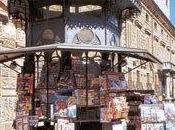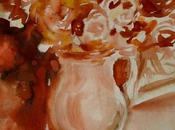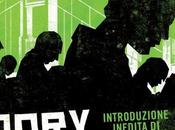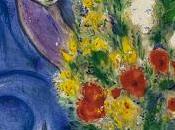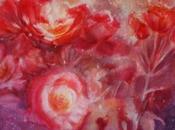
Let's admit it: is sport so funny without pains, blood and aches?
Sto scrivendo questo post a nome di una intera generazione di giovani-vecchi. Sono quelli che fanno sport e hanno più dolori di una nonnina con la periartrite.
Professionisti o amatori, neofiti o atleti consumati, uomini o donne, stacanovisti dello sport o semplicemente amanti del benessere, non ne troverete uno che non abbia mai raccontato/lamentato/scritto di uno dei seguenti acciacchi:
- Acido lattico (volgarmente chiamato in questo modo, tanto per non essere tecnici)
- Contratture
- Stiramenti
- Distorsioni
- Fasciti
- Pubalgie
- Tendiniti
- Mal di schiena
Se state leggendo e praticate uno sport, certamente il pensiero è andato al vostro migliore amico, il vostro angelo custode: il fisiosterapista. Che è anche uno psicologo, e voi gli volete bene anche per questo.
Quello che molte persone non sportive mi chiedono, soprattutto adesso che continuo ad essere a riposo stra-forzato, è sempre la stessa cosa: “Ma perché voi altri fate sport se poi avete sempre dolori?” Diamo subito la risposta più importante: non è masochismo.
Bisogna specificare che infortunio è diverso da avere dolori: nella prima categoria viene inserito tutto quello che non risponde allo stimolo nervoso dato da una botta, un piede messo male, un affaticamento muscolare. Un brutto contrasto con un avversario o una sessione di allenamento individuale troppo dura o eccessivamente lunga può portare a traumi e infortuni, che spesso si cronicizzano.
Non conosco uno sportivo a cui non piaccia avere dolori, nel senso più romantico del termine. Naturali reazioni da libri di fisiologia e biochimica a parte, è il modo più bizzarro che il nostro corpo conosce per ringraziarci di averlo portato a un livello superiore.
Nell’indole dell’uomo esiste questo istinto di ricercare continuamente il limite sopportabile. Quante volte dopo 10km di corsa avete sprintato spingendo a tutta, per vedere se lo tenete? Quante volte avete calciato la palla con tutta la vostra forza, oppure siete arrivati al traguardo allo stremo delle forze, senza fiato?
E i dolori e i doloretti sono la conseguenza dell’aver spinto voi stessi al limite, per superarlo. E diventare più forti.
Ricordo quando ero al liceo e ogni mercoledì mattina salire le scale della scuola per arrivare in classe era una missione estrema. Dopo la sessione di allenamento in palestra del martedì, avevo le gambe e le braccia così imballate che già alzarmi dal letto o sedermi sul water erano dei traguardi enormi. Eppure mi sentivo bene, nonostante i dolori. Perché erano dolori normali: il corpo mi stava dicendo che era affaticato, ma che stava bene. Bastavano poi le serie di ripetute sui 200m del pomeriggio per azzerare il dolore.
La vera preoccupazione, per uno sportivo, è quando non si avvertono i dolori che si erano preventivati. O peggio, quando arrivano quelli brutti, quelli a fitte che ti comunicano brutte notizie, come contratture o infiammazioni.
Alla fine, avere dolore fortifica lo sportivo e lo gratifica. Con questo non voglio dire che avere dolore è una condizione imprescindibile dello sportivo, come una specie di condanna: la lettura dello sport in questo senso è profondamente sbagliata e non è assolutamente conforme allo spirito genuino che anima lo sport e i suoi praticanti.
Quello che molti non-sportivi non capiscono è come lo sportivo conviva più o meno serenamente con i dolori, come un coinquilino che non paga l’affitto.
Avete presente quegli scacciaspiriti rumorosi che si appendono davanti alle finestre? Suonano piacevolmente quando vengono accarezzati dalla brezza, ma quando giunge il vento della tempesta suonano in maniera forte e impetuosa.
I dolori agiscono allo stesso modo. E nessun sportivo sarebbe più sé stesso senza i suoi.
Il brutto è che ci accorgiamo di quanto ci manchino quando non li sentiamo, perché significa che siamo impossibilitati a fare sport.
E io non vedo l’ora di risentire di nuovo il mio scacciaspiriti muoversi per la brezza, perché sono stanca della tempesta.
PS: un mio amico, Nicola, mi ha segnalato il racconto di Pella sul controllo del dolore di un maratoneta. Inoltre, Nicola mi ha segnalato anche questi libri di Pietro Tabucchi. Dateci un’occhiata anche voi ;)
–
I’m writing this post on behalf of an entire generation of young-old people. They are the ones who do sport and use to have more aches than an old nanny with periarthritis. Professionals or amateurs, beginners or experienced athletes, you will not find one of those who has never told/complained/wrote about one of the following ailments:
- Lactic acid (commonly called in this way)
- Contractures
- Strains
- Sprains
- Fasciitis
- Osteitis pubis
- Tendinitis
- Backaches
If you’re reading this post and you practice a sport, your thought is surely going to your best friend, your guardian angel: the physiotherapist. He is also a psychologist, and you love him for this as well.
What many people use to ask me about sports, especially now that I’m still at forced rest, is always the same thing: “Why do you guys do sport if you always have aches?”
Let’s say the most important answer: it is not about masochism.
I have to specify that an injury is quite different from having aches: the first category includes everything that does not respond to nerve stimulus given by a shot, a foot put in a wrong way or a muscle strain. A tough tackle with an opponent or a too hard or too long individual training session can lead to injuries and accidents, which often become chronic.
I don’t know any athlete who does not like to have pain, in the romantic sense of the term of course. Besides natural reactions written on physiology and biochemistry books, this is the most bizarre way that our body knows to thank us for having brought it to the next, higher level.
It’s kind of a human instinct, that is always seeking and chasing the tolerable limit. How many times have you sprinted pushing full-out after 10km of racing, just to see if you keep it? How many times have you kicked the ball with all your might? How many times have you arrived at the finish line at the end of your tether, totally out of breath?
The aches and pains are the result of having pushed yourself to the limit, to overcome it. And get stronger.
I remember when I was in high school and every Wednesday morning climbing the stairs of the school to come to class was a great mission. My legs and arms were so packed after the Tuesdays gym training session that getting out of bed or sitting on the bowl were huge targets. But I felt good as well, despite the ache. Because the pain was a normal thing: the body was telling me that it was tired, but fine. Then the Wednesday afternoon training (2x4x200m) used to clear the pain at all.
The real concern for sportmen is when they do not feel the aches expected. Or worse, when they get bad pains, the ones that communicate bad news, such as contractures or inflammation.
After all, having pain strengthens athletes and rewards them. I’m not saying that having pain is an athlete condition or state of mind, as a kind of conviction: the reading of the sport in this way is deeply flawed and does not conform to the genuine spirit that inspires the sport and its practitioners.
What many people do not understand is how athletes can coexist with pain more or less peacefully, like a roommate who does not pay the rent.
Do you know those noisy wind chimes hung outside the windows? They play nicely when are caressed by the breeze, but when the storm comes the wind sounds so strong and impetuous on them.
The aches/pains act the same way. And no sportsmen would be themselves anymore without them. The bad thing is that we realize how much we miss them when we don’t feel them, because that means that we are unable to play sports.
And I can’t wait to hear again my noisy wind chimes moving by the breeze, because I’m tired of the storm.
Photo credit by Tomer Arazy
Ti potrebbe interessare anche questo! / Posts you might be interested in
- Eeek! Niente, per ora :)
